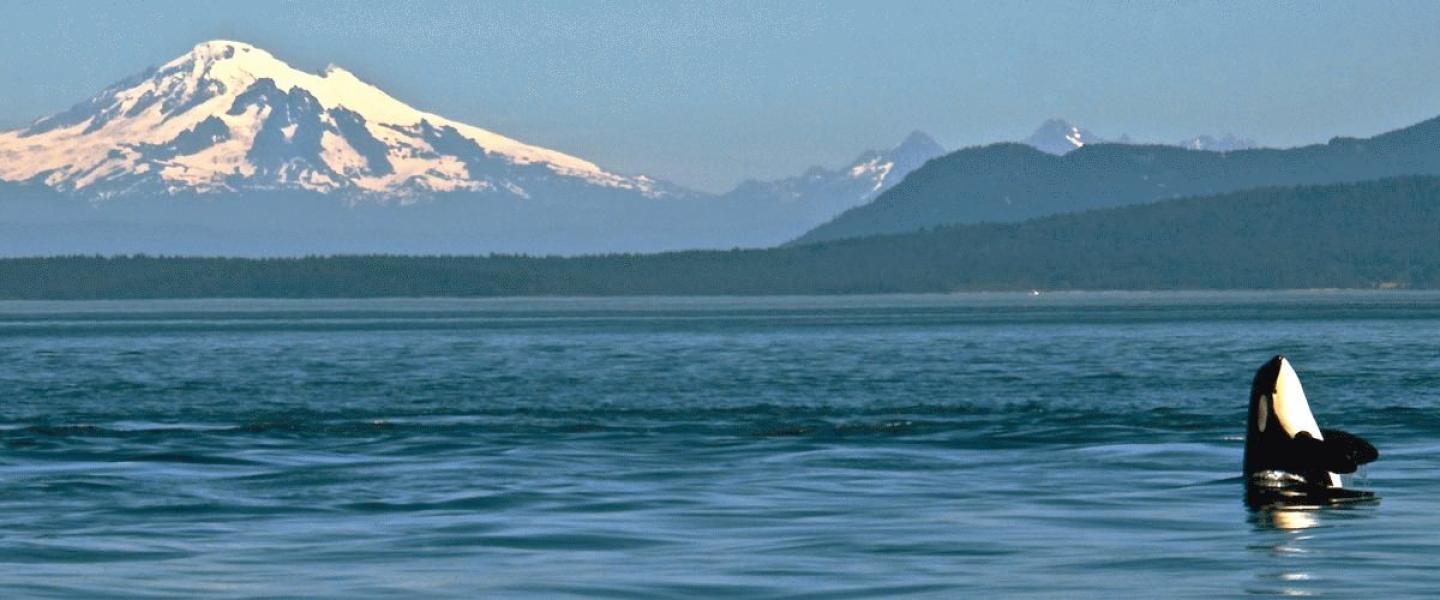
You could not ask for more out of the San Juan Islands than what we got today. Sun, sea and sightings all wrapped up in one stunningly beautiful package. The sea was a bit of a surprise today since we endured some bouncing around as we traveled up and around the north and west sides of San Juan Island. But the orcas were racing along and made for excellent photo specimens, plus the spray in our faces just reminded us of how lucky we were to be out on the water. When it was time to start back the breezes suddenly stopped and we had wonderfully calm water all the way back to the north end of the island.
Just before we departed the scene of the orcas, I took the opportunity of being on the M/V Kittiwake to conduct a class in phycology. What is phycology you ask? It is the study of algae. And, for our purposes, what is algae? Seaweed! The M/V Kittiwake happened to sidle up to a detritus line in the water, so I reached over the side and pulled some floating bull kelp, Fucus and eel grass out of the water. Why are these important you may wonder? Well, bull kelp forests are foraging sites for harbor seals, Steller's and California sea lions, and orcas. Fucus is an integral part of the intertidal zone and tidepool life. Eel grass is a flowering grass, just like the ones on land, and acts like a nursery for salmon smolt and juvenile crabs. The smolt actually feed on the crabs, and both salmon and crab fisheries are important economic industries in the U.S.The guests on the boat were good students and were all willing to participate when I washed some of the bull kelp and handed it around for tasting. Bull kelp is edible, like many other species of seaweeds, and has higher levels of potassium than bananas. Plus it is organic!
So, from all of us at San Juan Safaris, to all of you leafy greens lovers out there, thank you and we will...
See You In The Islands!
~Tristen, Naturalist